
Equine Portraits
In the 1944 movie National Velvet, then-12-year-old Elizabeth Taylor played the character Velvet Brown, who won a horse in a raffle and went on to fulfill racing dreams. Classic books such as My Friend Flicka and Misty of Chincoteague — as well as multitudes of more recent ones — also portray the incredible bond between humans and the horses they love.
Not all horses go on to win races and bring fame to their owners. Many live their entire lives simply as beloved companions. And that’s what art director Derry Noyes wanted to capture in the new release of the Horses Forever® stamps.
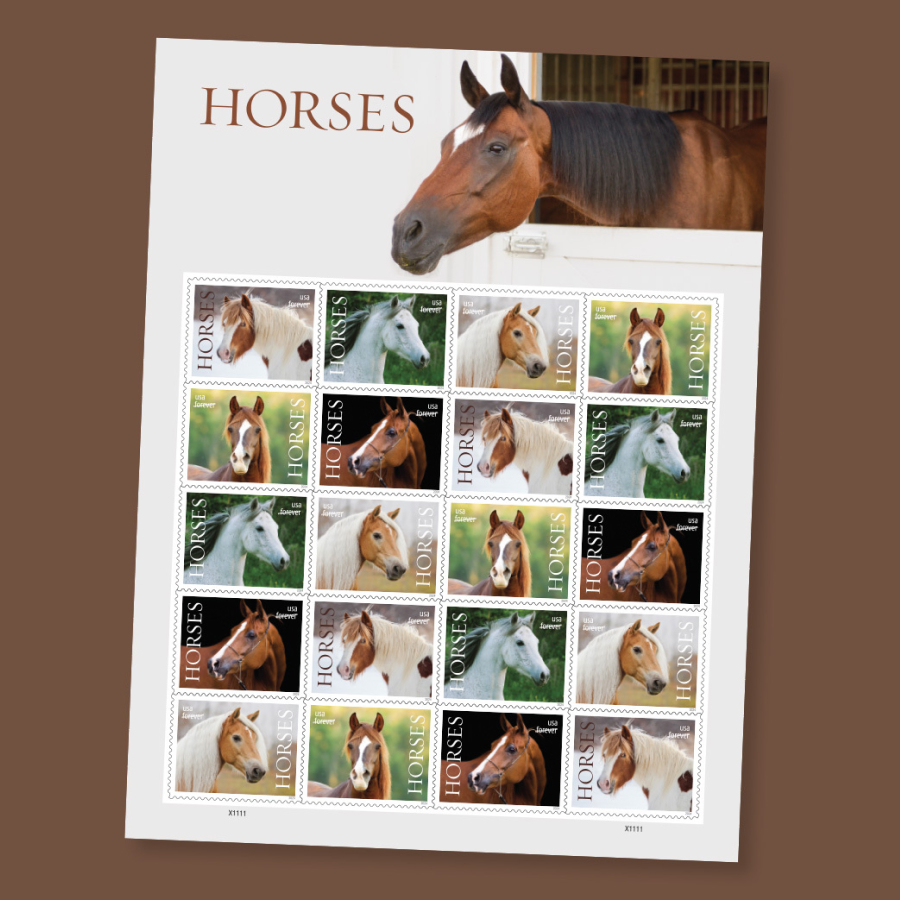
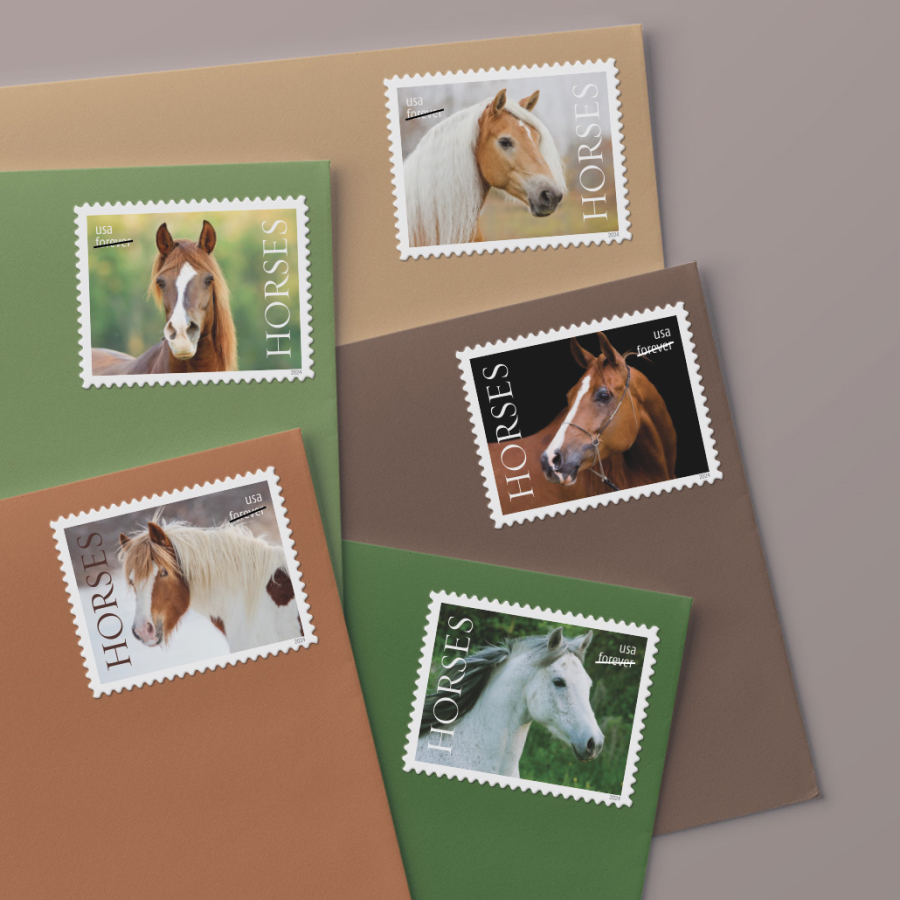
“I was a horse fanatic growing up,” she says. “I could eat, breathe, sleep everything horses. I was never allowed to have a horse, but I went to camps every summer that were only riding, all summer long."
“We’ve done horses in the past [on stamps], mostly formally, such as show horses, or Secretariat, steeplechasers, and the Quarter Horses," she adds, sharing that she wanted this new set to stand apart as more informal — portraits out in a field or a barn. "And I chose to use photography because we’d illustrated horses in the past."
“This was also to appeal to a different population — either those who actually own horses or who, like me, went to summer camp to ride their hearts out because their parents couldn’t afford a horse.”

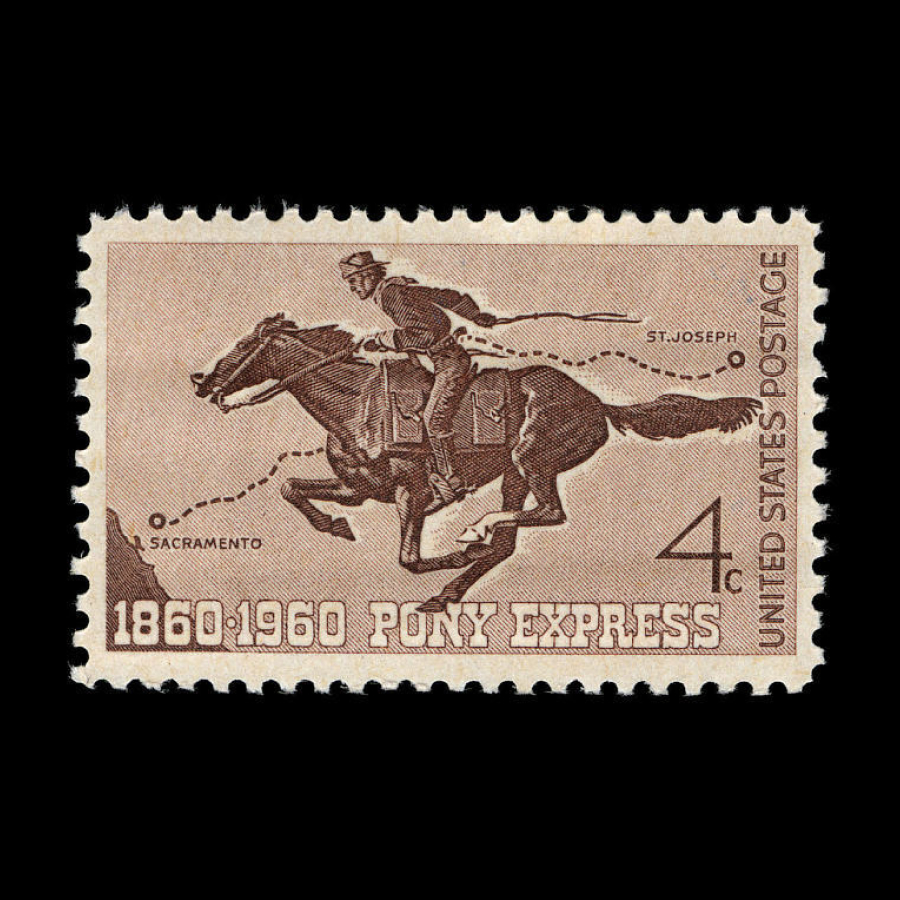
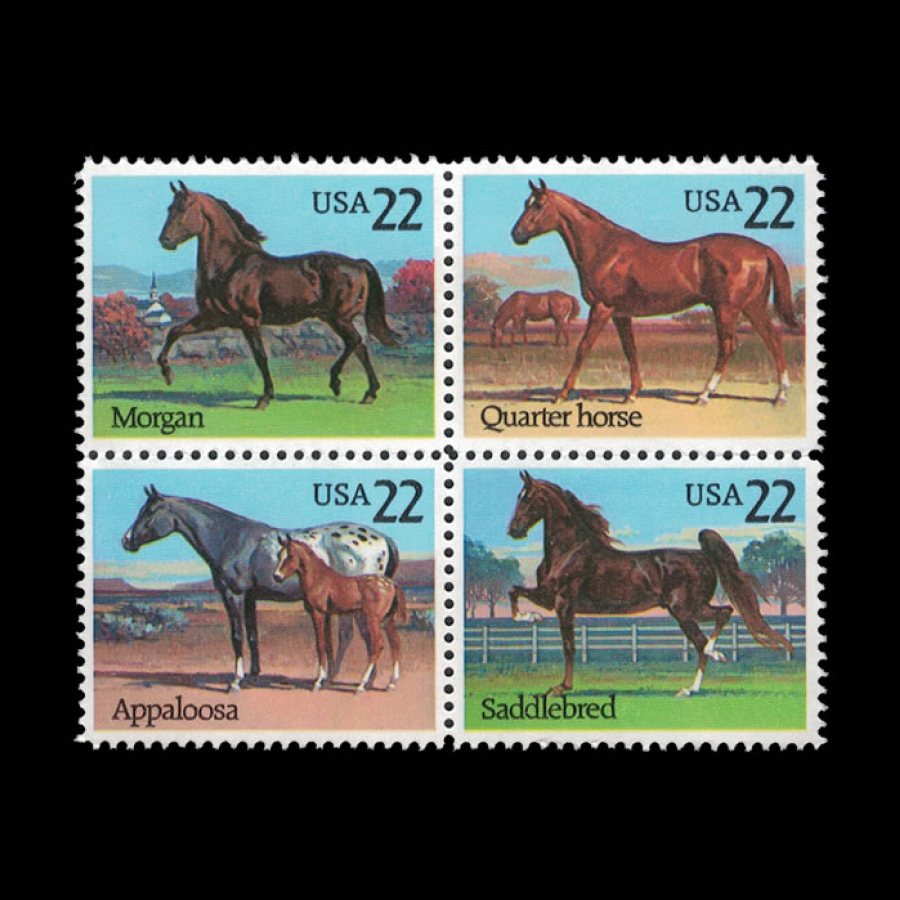
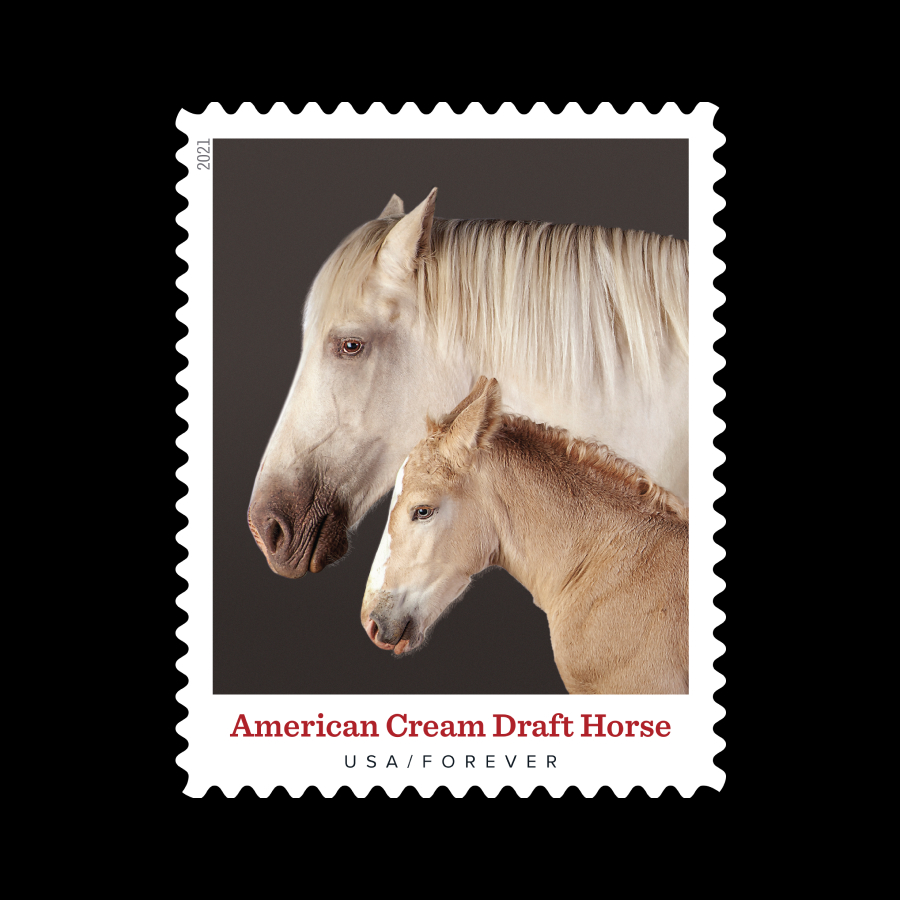

Indeed, the Postal Service® has featured horses multiple times over the years, starting in 1869, with the 2-cent Postrider and Horse. Since then, stamps have often included horses as part of other topics, such as famous battles.
We think of horses as integral to U.S. culture, yet their population has endured several upheavals over the centuries. For example, ancestors of the horse once disappeared from North America entirely, more than 6,000 years ago. Having reached Asia via the Bering land bridge, they thrived there and eventually returned with Spanish conquistadors in the 16th century.
Horses carried mail via stagecoach as early as the 1780s. Then in 1860, the famous Pony Express — a private service that operated for only 18 months — used a relay system of new fresh horses every 10 miles to transport mail from Missouri to the West Coast.
For all but one there’s no tack, no halter. They are out in paddocks or pastures — clearly these are horses that have landed in happy places.
Finally, after serving the needs of manufacturing, farming, and transportation, the U.S. horse population began dwindling due to increased industrialization and use of the automobile. Their numbers reached a low of about 3 million by the early 1960s.
Now, of course, horses serve in every capacity from farming and law enforcement, to ranching, equine therapy, and entertainment.
Safe in their happy place
So how to capture these majestic creatures in a new way on a stamp? Since many previous stamps showed the full body of the animals, Noyes chose to emphasize portraiture. And she found it surprisingly difficult to pin down what she was looking for. In the end, she chose to create the stamp art from the existing work of two photographers: Stephanie Moon and Karen Wegehenkel.
Once she’d settled on photography and portraiture, Noyes looked for variety. “I did not focus on breeds but on different colors,” she explains. “Some looking at you, some looking sideways.”
She paid attention to variety in the backgrounds too: different enough to be interesting but not jarring from stamp-to-stamp, with backgrounds that allowed each horse to stand out clearly.
“For all but one there’s no tack, no halter. They are out in paddocks or pastures — clearly these are horses that have landed in happy places.”
A particular favorite for Noyes is the photo she chose for the selvage, of a horse named Maggie: “She is obviously waiting for someone to arrive, with a look of ‘I’m here, come get me.’”
Altogether, Horses captures the affection and loyalty that these wondrous creatures give us, inspiring books and movies — and generations of Americans — for years to come.